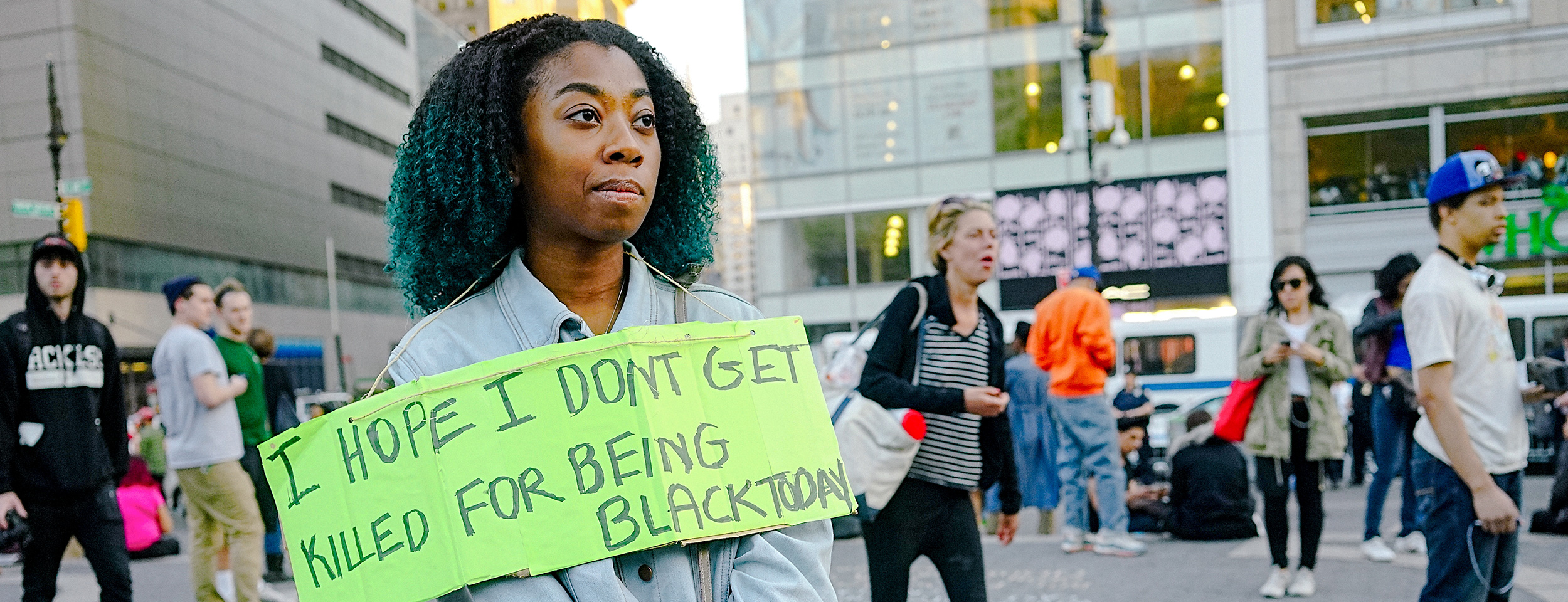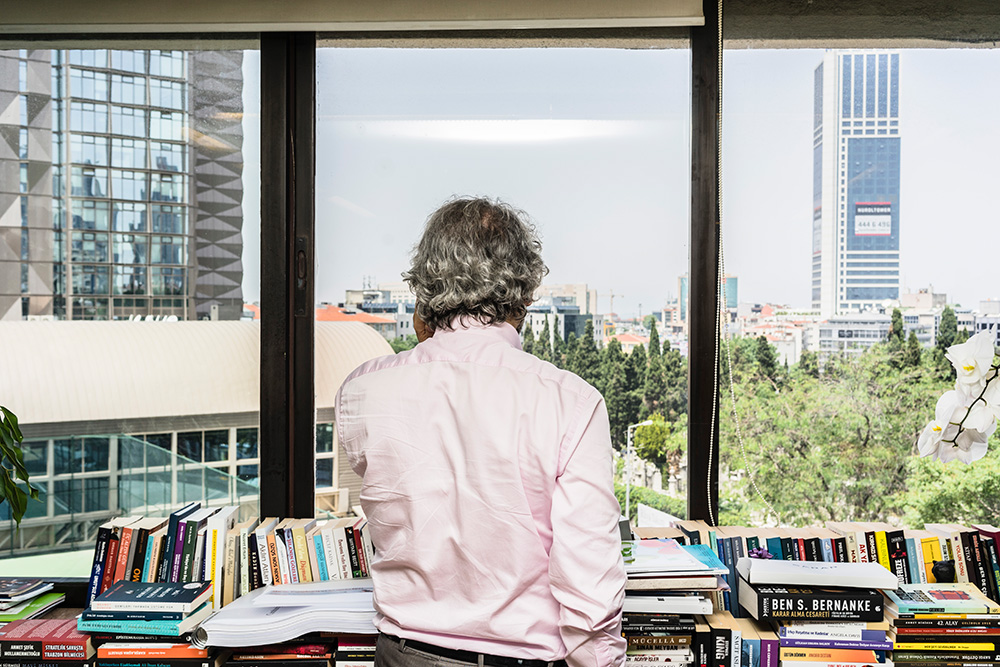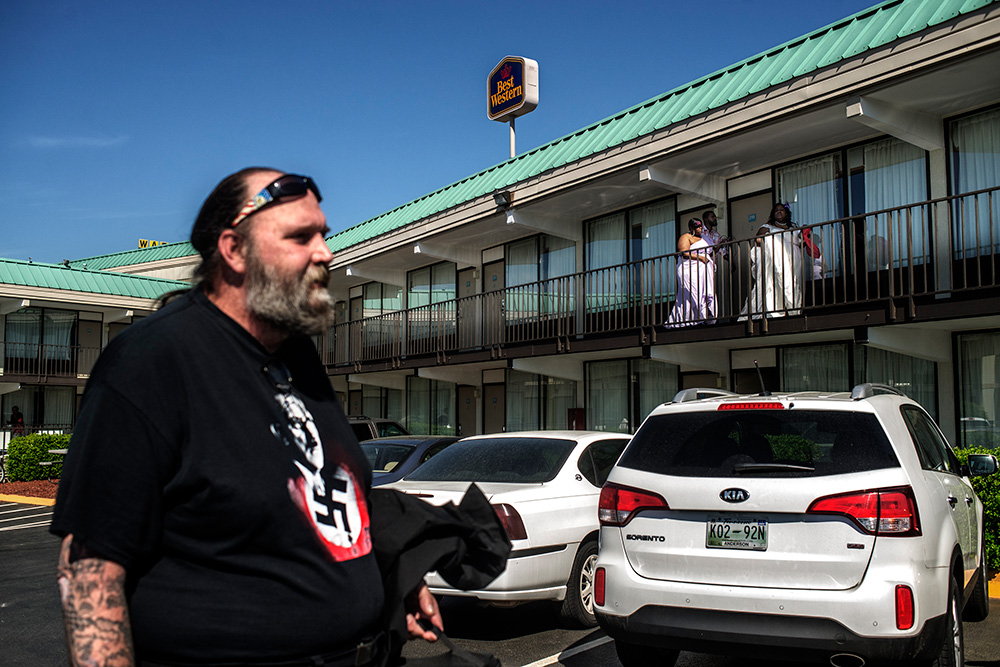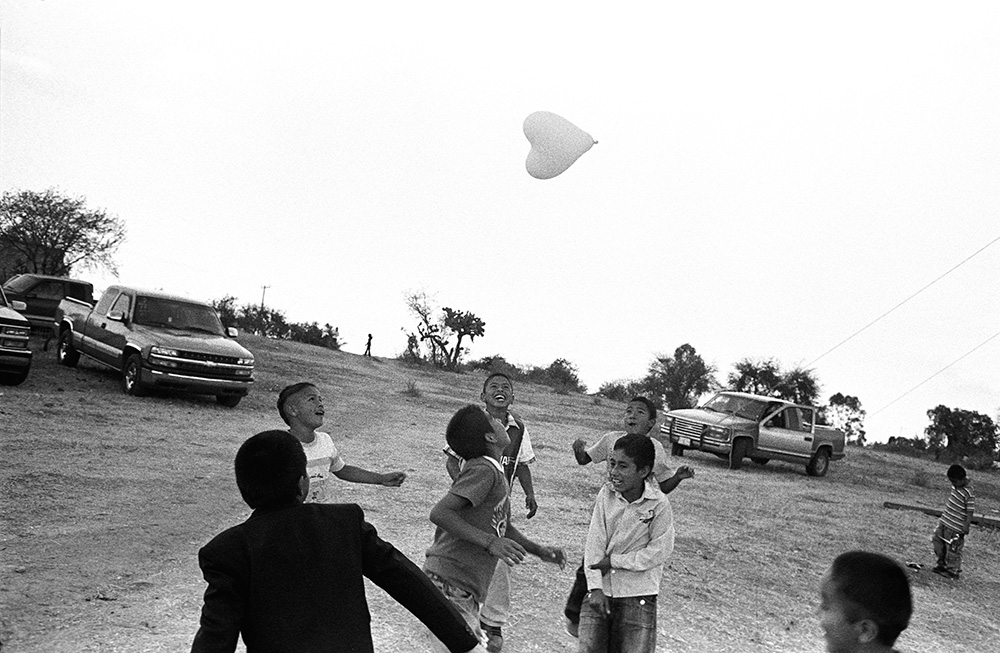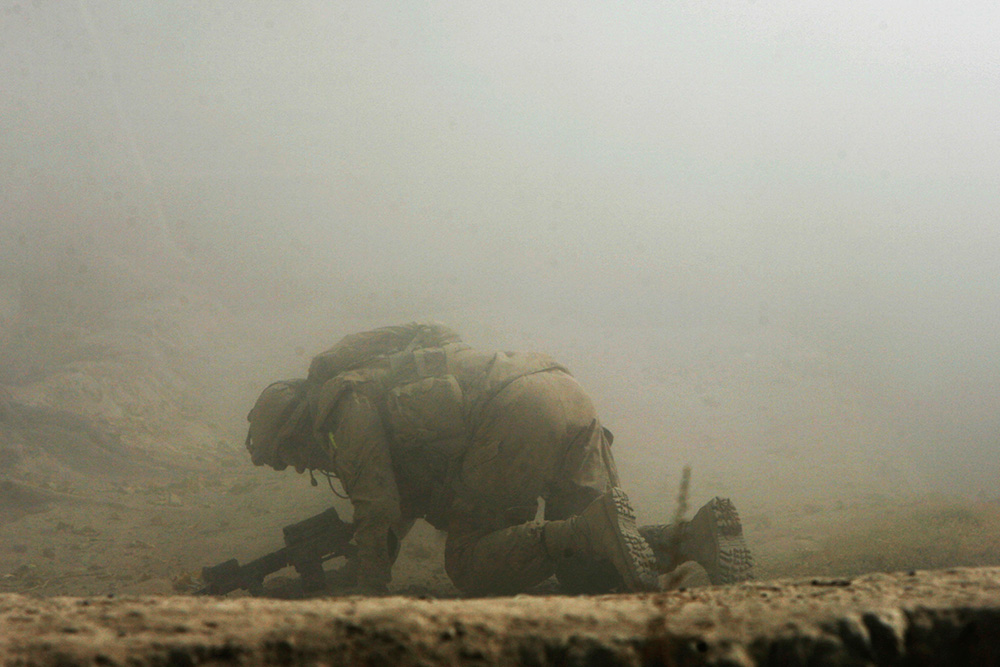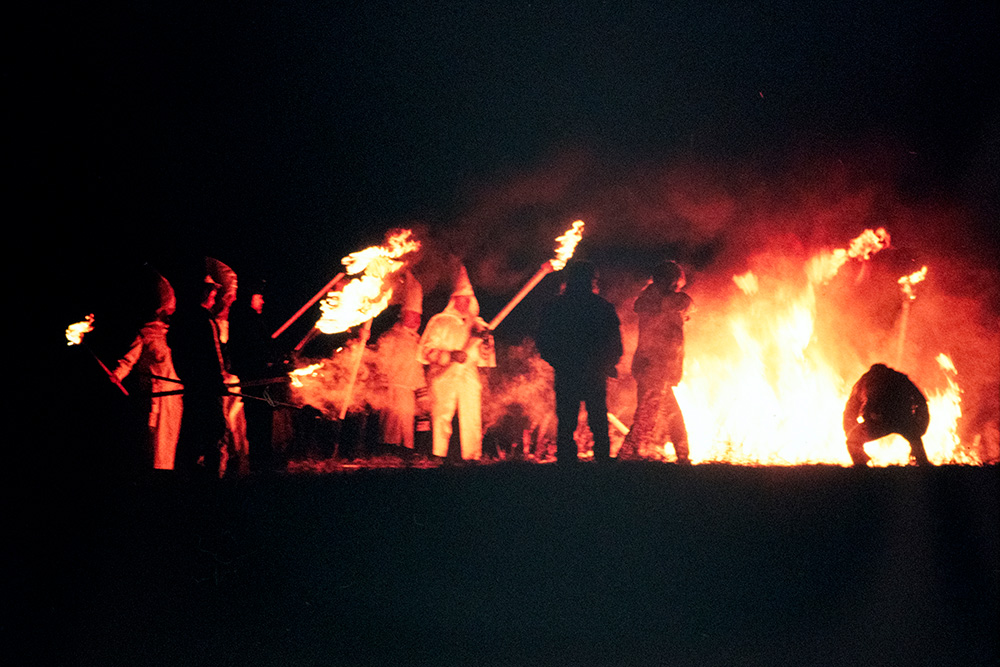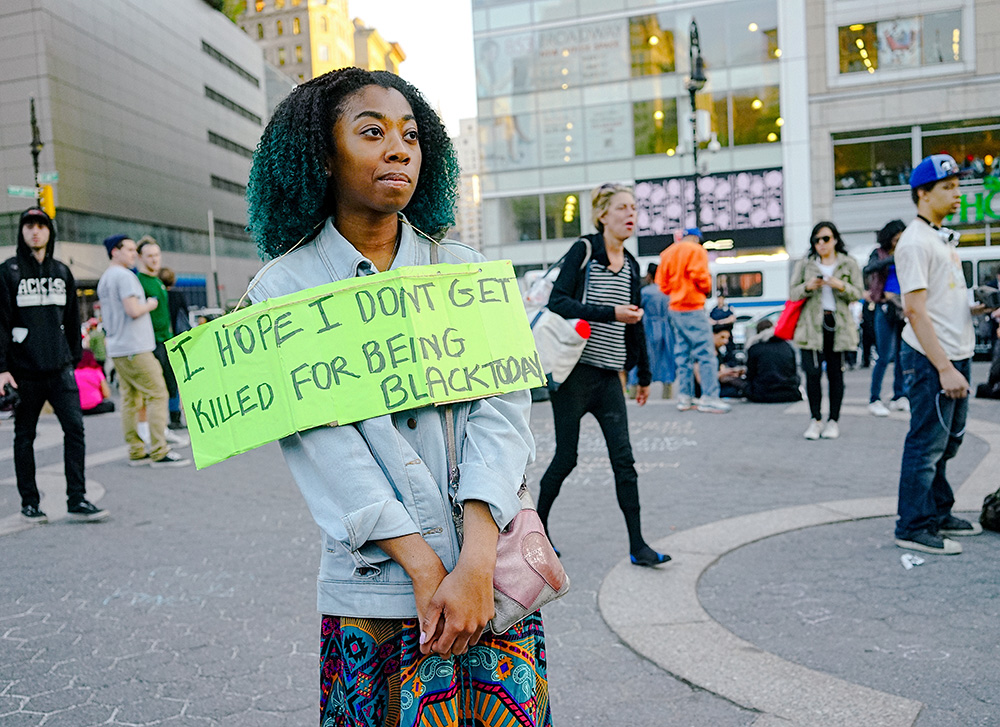Here, nine photographers share images that convey a sense of uncertainty and danger.
Enemy of the state
During a turbulent week in the summer of 2016, Guy Martin was holed up in the offices of Cumhuriyet, Turkey’s main opposition newspaper, with its editor Can Dündar. Since this photo was taken, Dündar has claimed asylum in Germany to avoid imprisonment. He’s also survived an assassination attempt. A year earlier, the Turkish government, led by President Recep Tayyip Erdoğan, charged Dündar and his newspaper with disclosing state secrets, espionage, and aiding a terrorist group. The government considered Dündar and his colleagues “enemies of the state,” later blaming them for the attempted coup in July 2016. “This picture now represents what happens when men in power aim to divide the population with malicious falsehoods,” says Martin, “enforcing a culture of chaos and unchecked violence in which any sort of objective truth-based reality ceases to exist.”
Before the rally
The white nationalists were interested in talking to a student—someone who was young and impressionable and wasn’t a member of the media. So when Johnny Milano began approaching these groups in 2012 while still a student at the International Center for Photography, he was allowed into their world. Over the last five years, he has spent time with the Confederate White Knights of the KKK, the Traditional Workers Party, the Nationalist Front, and the American Vanguard, among other white nationalist groups. The picture above is from 2014, as members of the National Socialist Movement gather in the parking lot of a Best Western before a rally in Chattanooga, Tennessee. Most members allowed Milano to take photographs freely, but at one rally a man in fatigues approached him. “If you take pictures of me or any of my guys,” he said, “I will shoot you in the face.”
Night becomes day
On March 8, 2016, in the Mashhad neighborhood of Aleppo, Abd Alkader Habak was resting on his sofa when he heard the sound of a rocket launching in the distance. It whistled over his building and there was a large explosion nearby. Habak grabbed his camera and ran out the door, forgetting to put his shoes on. “People were shouting and crying, running around the street. I couldn’t do anything because of the flames, so I started to film and take photographs to document the incident.” Then there was a second explosion, and suddenly most of the people around him were dead. He took shelter until the debris stopped falling, and then started looking for survivors to help. “What I felt that day is the same feeling that any person would feel, fear. But fear didn’t linger on as I had to face the situation, help the people, do what needs to be done.”
Left behind in El Salvador
Kathya Maria Landeros learned about the remote village of El Gusano when she moved to Mexico on a Fulbright grant. “The roads weren’t marked or paved, and it had been described as a ghost town—a place where women, the elderly, and children were left behind while men worked in the United States.” At the time, Landeros was documenting the micro-economies of local communities and she’d heard that the women of El Gusano had formed a sewing cooperative for hand-embroidered goods. After several visits to the village, Landeros was invited to photograph a quinceañera in January 2009. The celebration was in stark contrast to the barren landscape and its dire economic situation. When looking at the photograph today, she still wonders about El Gusano’s residents: “Are the boys in the photograph still there? Have they left for the United States? And, if so, what is their life like here in the United States during this particular moment in time?”
A sudden attack
A few hours after dawn on October 23, 2007, the Afghan army learned that the Taliban knew their location. The plan had been to ambush the Taliban, but now they were compromised. Finnbar O’Reilly, then a Reuters photographer, was embedded with a combat patrol of Canadian armed forces training the Afghan National Army. They abandoned the planned operation, but as they crossed an open field, the first Taliban shell exploded 15 feet from where O’Reilly was standing. As shell after shell exploded, he snapped photos through the haze, including one of Canadian sergeant Paul Pilote crawling away from an explosion. “When working in places like Afghanistan, I always tried to brace myself for the worst, and this was hardly my first experience of violence or combat. But the suddenness, the size, and the proximity of the explosions were more frightening that day than anything I’d experienced.”
Witness to a burning
On January 13, 1990, Nina Berman was traveling to Tennessee with a group of photojournalists to cover marches protesting Martin Luther King, Jr. Day: “It was an early instance of Aryan Nations and skinheads making an alliance with the KKK.” During the march, they learned that a cross burning would take place later that night in a remote area somewhere outside the city of Lawrenceburg. At first, the protesters tolerated the photographers. But that changed once they lit the cross. Part of the field caught on fire, and the skinheads became aggressive—they shouted, hurled rocks, even chased the photographers down in their pickup trucks. In the moment, she was frightened, and years later, it still resonates with her, especially in the aftermath of Charlottesville. “I’m struck by how easy it can be to underestimate the capacity for violence, especially with groups who parade publicly and appear to follow the rules—until they don’t.”
Crowd control
There were 14 Republican candidates in attendance at the Ronald Reagan Center in Washington, DC, vying for the attention and money of the Republican Jewish Coalition. Hector Rene, a photographer and Army veteran, had been hired to document the event. The audience was mostly there to see the spectacle they’d seen on TV. When Donald Trump took the stage, he put the donors at ease, cracking jokes “like he was speaking to friends on a golf course.” In December 2015, most people in attendance didn’t take him seriously. “I didn’t think that was going to be his audience, but they were impressed,“ says Rene. ”They were mostly happy to have seen him speak.”
The long stay
In the fall of 2002, Marc McAndrews bought a converted van off of eBay for $500 and began crisscrossing the country looking for long-stay motels, the kind where rooms could be had for as little as $20 a night. He’d arrive at the front desk with a metal binder of portraits and ask the owners if he could take their photograph. He was rejected at first. One man asked McAndrews if he could check his ID, just to make sure he “wasn’t a terrorist.” In Springfield, Illinois, McAndrews met Sheree Tucker, owner of the Pioneer Motel. As he set up his 4 x 5 camera they talked about where they were from, what they believed in, and the looming war in Iraq. Although McAndrews visited dozens of motels in his travels, only the owners of the motels would consent to be photographed. Those living in the shabby rooms rejected his offer.
A silent protest
She was standing alone, silent, away from the protesters who had gathered in Union Square on May 1, 2015, calling for a $15 minimum wage, an end to deportation, and justice for the unarmed who were killed by the police. Ruddy Roye approached the woman, took her picture, and walked away, later uploading the image to Instagram, as he did for all the images he took that day. His project, “When Living Is a Protest,” documents the men and women who carry the burden of racial injustice in their daily lives: “She woke up, brushed her teeth, and she made this sign,” he says. ”What prompted her to do this?” Roye is often depressed by the news, and when he goes out to take photographs, he first asks people for their story, and then tells them his own. “I look for other people who have been going through the same things.” But on this day, the young woman’s silence told him enough.
Meg Dalton and Michelle Legro are the authors of this story. Meg Dalton is a CJR Delacorte fellow. Michelle Legro is an editor for Longreads and a contributing editor for CJR.



